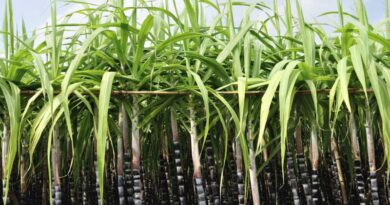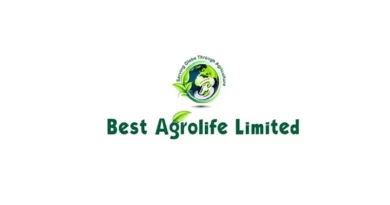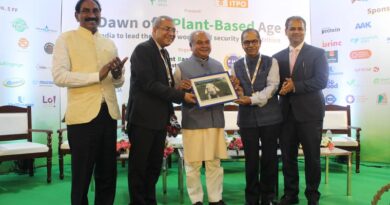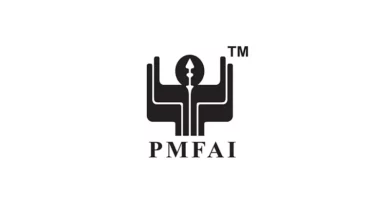A sugar rush for emissions
06 March 2023, New Delhi: By all reckoning the ethanol story for India will leave a sweet taste all round.
For sugar growers it spells growing demand, for the government a lower import bill for oil, and for environmentalists, cleaner emissions from vehicles.
From April this year, all cars in showrooms have to be E20 compliant.
This means that whenever the ethanol spike in the petrol reaches 20 per cent, the vehicles have to be good enough to run on them.
According to the National Policy on Biofuels timetable, India could hit the 20 per cent mark by 2025.
India had already crossed the 10 per cent mark in June last year. So, few doubt that the next milestone could come earlier than 2025.
At current run rates India is the world´s fifth largest producer of ethanol � the US, Brazil, the European Union (EU) and China being ahead of it.
Since ethanol tends to corrode rubber parts fast, vehicle manufacturers have to also wrap those parts with safety materials.
“In Brazil we brought in the world´s leading car manufacturers and solved their corrosion problems.
So, India, too, I believe should be able to navigate this,” said Andra Aranha Correa do Lago, Brazilian ambassador to India at Fuels of the Future event organised by Ananta Centre in New Delhi this month.
Brazil and the USA are the global leaders in mixing ethanol with petrol.
Brazil has achieved levels of 25 per cent and more since 2015.
Although there are many questions about how far India should expand sugar production, a water guzzler crop in the middle of looming water scarcity, the larger challenge is of price signals.
The reason farmers in Uttar Pradesh and Maharashtra prefer sugarcane to other crops is the government mandated price they receive.
Despite the usual shortcomings of dealing with a government agency with delayed payments, the system of Fair and Remunerative Price (FRP) for sugarcane farmers and that of minimum support price for sugar mills has expanded the crop size.
Government data notes that “India has surpassed Brazil in sugar production in the current sugar season ( 202223)” and has become the world´s second largest exporter.
“ FRP, which the government considers the input price in ethanol production, means sugar companies are insured against surprises in ethanol production costs,” said Abinash Verma, former director general of Indian Sugar Mills Association and now an ethanol producer.
This means both Central and state governments will ensure there is no downside risk to the production pattern.
The Indian model is to control prices of ethanol and expect sugarcane farmers and millers to respond with production shifts.
The strategy has worked so far. As the statewise table shows, in sugar season 202122 ( October September), about 35 lakh tonnes of sugar is estimated to be “diverted” for ethanol production.
The number is expected to reach 60 lakh tonnes by 202526. The Cabinet Committee on Economic Affairs concluded this scale of “diversion” would address the problem of excess sugarcane production as well as the challenge of delayed payment for farmers.
Since there will be a ready market for sugarcane other than sugar and the oil marketing companies will be finally buying the ethanol, the often cash starved sugar mills would not keep farmers waiting.
There are already plans to offer the same price support for maize or broken rice.
Both are another, albeit a less efficient, route to ethanol. Verma said grain based distilleries face the problem of price volatility.
“ The oil marketing companies have considered a low input price of maize and also broken rice to fix the price of ethanol.” Since the price of maize ruling in the market is about 25 per cent higher, there has been no attempt by the grain based distilleries to produce ethanol from these two crops, he added.
The larger issue could be the stock of ethanol crops.
Unlike crude, sugarcane or maize production depends on the weather.
The Brazilian ambassador said this problem, too, can be fixed once the automobiles incorporate a flexi fuel design that allows the car to run on any combination of ethanol and oil. Ethanol up to, say, 13 per cent, increases the oxygen in the oil mixture, making for better burning.
But after that the calorie value of each shot of the fuel dips somewhat, which means the car could be burning more oil to get the same engine thrust.
Overcoming this challenge, automobile company bosses say off record, will raise costs.
Maruti Suzuki has just demonstrated its prototype WagonR flex fuel car that can run on an 85 per cent ethanol spike.
The car, however, is not expected to leave the factory commercially before 2025.
As the US, India and Brazil join the ethanol race, these countries will have to meet growing demand from their own production.
A Niti Aayog modelling exercise puts the demand for ethanol at 1,016 crore litres by 2025.
The domestic production of 684 crore litres will have to jump by 48 per cent to achieve this target.
There is, therefore, little global capacity available for countries to trade or build storage capacities like those for petroleum reserves.
In which case, a sudden drought could play havoc.
In 2011, Brazil had to scale down its ethanol spike to 11 per cent as shortages loomed.
An international market could mitigate this risk, but countries shall have to decide if a common reserve, stored physically across several nations, is a viable option.
These are tough choices.
Given that the government will have to find more money for FRP and MSP, savings from oil imports will almost entirely be funnelled to the farms.
Offering an estimate, Rahool Pai Panandiker, managing director and senior partner at BCG, at the same Ananta Centre event said, “India has already potentially saved $6.8 billion of forex by its ethanol spike programme, allowing for an additional support of $5.1 billion to the sugarcane farmers.”
Also Read: Bill Gates visits Indian Agricultural Research Institute in New Delhi
(For Latest Agriculture News & Updates, follow Krishak Jagat on Google News)















